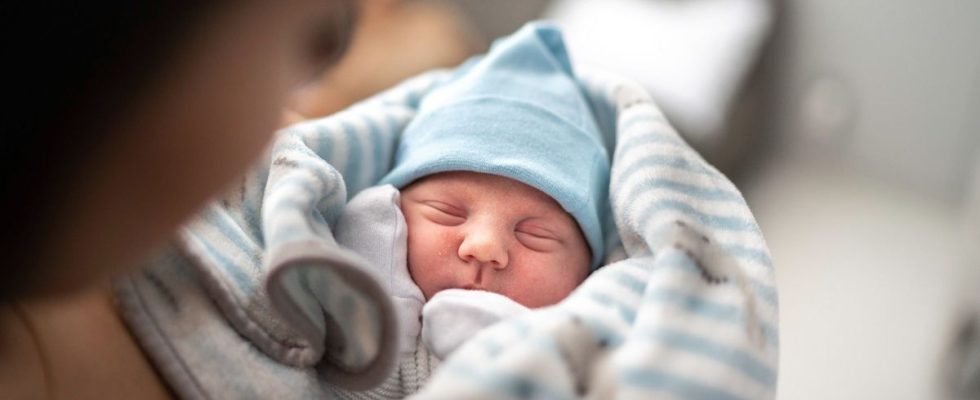Published on
Updated
Reading 3 min.
The number of births in France, which had already reached its lowest level since the end of the Second World War in 2022, further fell by almost 7% in the first half of 2023 compared to the same period of the previous year, announced INSEE on Thursday.
“In the first half of 2023, there are 24,400 fewer births than in 2022, a drop of 6.8%.“, indicates the National Institute of Statistics (Insee). “Year-on-year, June 2023 is the 12th consecutive month of decline..
Since 2011, births have declined every year
“Apart from the months of January and February 2021, affected by the confinement of spring 2020, the months of the beginning of 2023 correspond to the lowest number of monthly births recorded since 1994“, first year where monthly data are available, indicates INSEE.
During the year 2022, 726,000 babies were born, or 2.2% less than in 2021. This is the lowest number of births since the end of the Second World War, indicates INSEE, confirming data published in January.
Births are 20.8% lower than the post-war peak in 1971.
Since 2011, births have declined every year, with the exception of 2021, coming after the Covid confinements. In twelve years, between 2010 and 2022, the decline reaches 12.8%.
Cumulatively over the first eight months of 2023, there are around 35,000 fewer births than over the same period of 2022, a drop of 7.2%.
“If this trend continues over the year, the number of births should fall below 700,000 in 2023“, commented for AFP Chloé Tavan, head of the demographic surveys and studies division at INSEE.
A decline in all regions and all age groups
“The decline in births is observed in all regions and all age groups, with the exception of mothers over 40, a reflection of later motherhood.“, she continues.
“The number of births to mothers aged 40 and over increases by 3.3% between 2021 and 2022.“, notes INSEE.
For women aged 25 to 29, births fell by 2.7% between 2021 and 22, and by 3.6% for those aged 30 to 34.
In 2022, mothers are on average 31.2 years old, an age that has “continuously increased since the second half of the 1970s, when it was at its lowest at 26“, indicates INSEE.
A drop in the birth rate observed in Europe
The same trend is observed in the other EU countries: births fell by 5% between 2021 and 2022 across the EU: the decline was thus marked in Spain and Italy (-2%), but even more in Germany (-7%) and Poland (-8%).
In France, two thirds (65%) of births took place outside of marriage. Until the end of the 1970s, this share did not exceed 10%.
79% of babies born in 2022 bear only their father’s name, compared to 83% in 2012.
68% of newborns have parents who were both born in France. Ten years ago this was the case for three quarters of births (73%).
NO to diets, YES to WW!
Different hypotheses to explain this decline
Questioned in the newspaper La Croix, sociologist Julien Damon puts forward a hypothesis: “Women are having children later and later, so late that they are having fewer. We are facing a change in attitude towards children and family aspirations. Today, having a child is often seen as a way of self-realization. We want to be able to reconcile family life and professional life and also be sure of having a method of care.e”.
However, he puts this development into perspective: “the fertility rate is significantly low, but remains within the range that we have experienced over the last fifty years, between 2.1 children and 1.7 children per woman. Let us not forget, he said, that France is still in the forefront of rich countries. We are not in the catastrophic situation of Spain or Italy, where the fertility rate is 1.2 children per woman.”.
